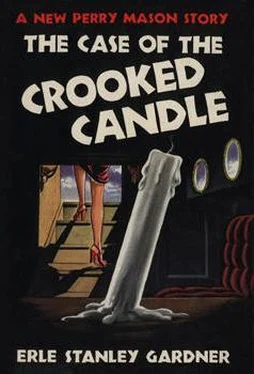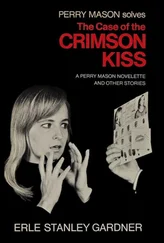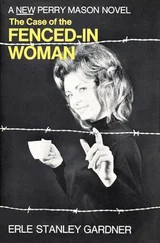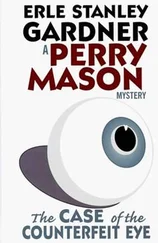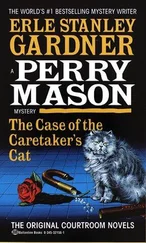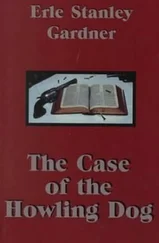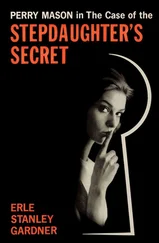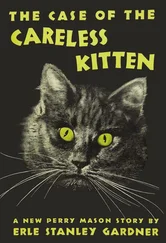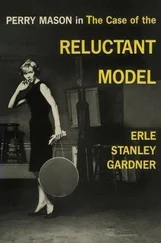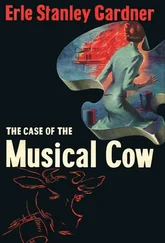Mason put the diagram down on the arm of the chair so all three of them could see it.
Drake studied the diagram silently for several seconds and said, “Well, what’s wrong with all that, Perry? That’s just the way a body would act. It would lie in one position until the tilt became enough to move it and then when that happened, the body once in motion would roll over and over until it banged up against the low side of the cabin in the position in which it was found.”
“Very good,” Mason said. “Now notice that the boat started to tilt at nine o‘clock Friday night. It hadn’t assumed its position of maximum tilt till about ten-thirty p. m. Friday night. Now the candle is tilted at about seventeen degrees, which indicates that at the time it was burning, the yacht had tilted over about half way. Therefore, we might strike some sort of an average — depending on certain factors which we can’t anticipate at the present time. But I would be inclined to say that we’d find that intermediate period when the yacht had tilted at about seventeen degrees to be rather shortly after nine o’clock — say around nine-twenty and probably not after nine-thirty, and certainly not after nine-forty.
“Now we start putting things together, bearing in mind the statement of the autopsy surgeon that the period of bleeding did not, in his opinion, cover more than half an hour.
“The body was lying with the head against the threshold of the forward cabin, or within an inch or two of that threshold in what we have referred to in the diagram as position number one, and then it rolled over to position number two, and if the bleeding didn’t continue for over half an hour, and if we find blood pools at both position number one and position number two, then we are forced to the conclusion that the murder took place somewhere around nine-fifteen Friday night after the boat bad started to tilt.”
Drake nodded and said, “That’s corroborated by the candle.”
“Exactly,” Mason said. “The condition of the candle indicates that it burned for about twenty minutes, sometime between nine o’clock p.m. and nine-forty p. m. Probably the candle was lit about nine-twenty and extinguished about nine-forty.”
“It was dark before that,” Drake said.
“Now you’re getting to some of the puzzling features of the case,” Mason said. “Either Milfield must have been sitting in the cabin in the dark, or there’s another possibility which seems to be much more feasible. That is, that there was an old stub of a candle in the position where the candle was found. Milfield lit that when it got dark, and that candle burnt itself out, whereupon Milfield pried it loose from the board to which it had been stuck, and tossed it overboard. He thereupon lit a fresh candle and...”
“By George,” Drake said excitedly, “that’s it. Perry! That ties the whole thing together. That makes everything check. Milfield had just lit this fresh candle when the murderer came aboard. It must have been within five or ten minutes of the time he lit the candle.”
“Exactly,” Mason said. “That fixes the time of crime with almost a mathematical certainty, doesn’t it, Paul?”
Drake nodded.
“But,” Mason said, “Roger Burbank had his altercation with Milfield at around six o‘clock in the evening. Carol Burbank drove down to the yacht club as soon as she heard about it. She reached the yacht sometime after seven o’clock and before eight o’clock. The yacht was still on an even keel. She found the body lying in position number one. That’s her solemn statement to me.”
Drake said, “By George, Perry, you’re absolutely right. The girl’s lying. She’s lying like a trooper about the time element. It simply couldn’t have been the way she described it.”
“That’s right,” Mason said. “Everything checks. Carol Burbank is lying. She must have boarded the yacht sometime after nine o’clock. Bear in mind that either the murderer lit the candle, or she lit the candle. There is always the possibility that the candle was lit after the murder had been committed, and the murderer had departed.”
“Not very likely in view of the fact that the old candle had been removed,” Drake said.
“Not very likely,” Mason admitted, “but it’s a possibility.”
Drake said, “You’ve got me sold, Perry. Carol Burbank is lying.”
“Now wait a minute,” Mason said. “We come to the one thing which substantiates Carol’s story.”
“What’s that?”
“The location of the bloody footprint. The footprint is right in the middle of the tread of the companionway. That indicates the yacht was on an even keel when the bloody footprint was made. Now how do you account for that, Mr. Detective?”
Drake scratched his head and said, “Damn it, Perry, I don’t. It just doesn’t fit into the picture at all.”
“There you are” Mason said. “That bloody footprint indicates Carol is telling the truth. On the other hand, the evidence of the candle indicates she’s lying. The evidence of the bloodstain indicates she’s lying. According to the theory of the tides, the murder simply couldn’t have been committed before nine o’clock.
“And always remember that whenever you’re dealing with a murder case, you must take into consideration certain facts. The murderer will always lie. And certain witnesses will sometimes lie. Therefore, you have to take into consideration the fact that the story anyone tells, either on or off the stand, may be false.”
“Wouldn’t it be possible that this footprint could have been framed?” Della Street asked.
“Now,” Mason said, “you’re getting to the thought that’s in the back of my mind. Suppose a girl who knew something about tides, who’s smart enough to think fast in an emergency, realized that, for some reason or other, she wanted it to appear the murder had been committed at a time considerably earlier than had actually been the case. The yacht was tilted at the time she was aboard, but she realized that if she left a bloody footprint in the exact center of the tread of the companionway, it would indicate the yacht was on an even keel.”
“By George!” Drake exclaimed. “Now you’ve got something! And Carol is a fast-thinking little number.”
Mason said almost musingly, “I can’t afford to make any fumbles. I’ve got to hit the bull’s-eye with my first and only shot. The autopsy surgeon says the bleeding — that is the extensive bleeding — occupied a period of probably not over thirty minutes. There are just two big pools of blood, one in position number one, and the other in the position in which the body was found. That indicates a murder right around nine-twenty. The position of the candle indicates a murder right around nine-twenty. That bloody footprint is the one thing that doesn’t fit into the picture. Now, I’ve got to know why it doesn’t fit into the picture, when it was made, how it was made, and why it was made.”
“Is there a possibility,” Della asked, “that the footprint could have been made the next morning after the boat returned to an even keel?”
“That,” Mason said, “is the solution that I keep flirting with. It’s the only thing that could possibly account for all the facts as I see them now.”
“The question is, would the blood remain moist that long?” Drake asked.
“I think it would,” Mason said, “particularly where the blood had soaked into a carpet. Remember that this carpet on the floor of the cabin is very thick and very heavy. It fits into position and is held there by a series of snaps.
“By examining the circumstantial evidence, we have three clocks fixing the time of the murder with mathematical precision. The first and most important clock is the ebbing and flowing of the tide. The second clock is the candle, at an angle of approximately seventeen degrees from the perpendicular, yet with the wax running down smoothly on both sides, indicating that the candle was approximately erect at the time it was burning.”
Читать дальше
